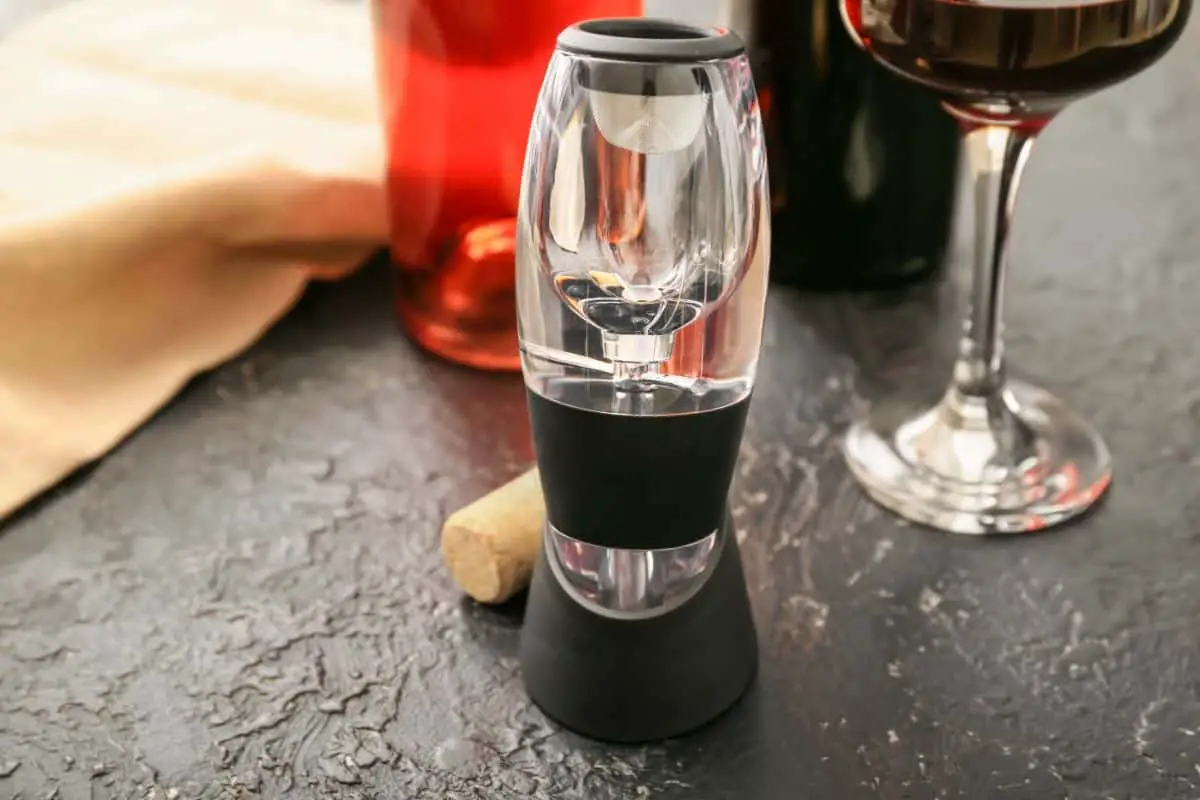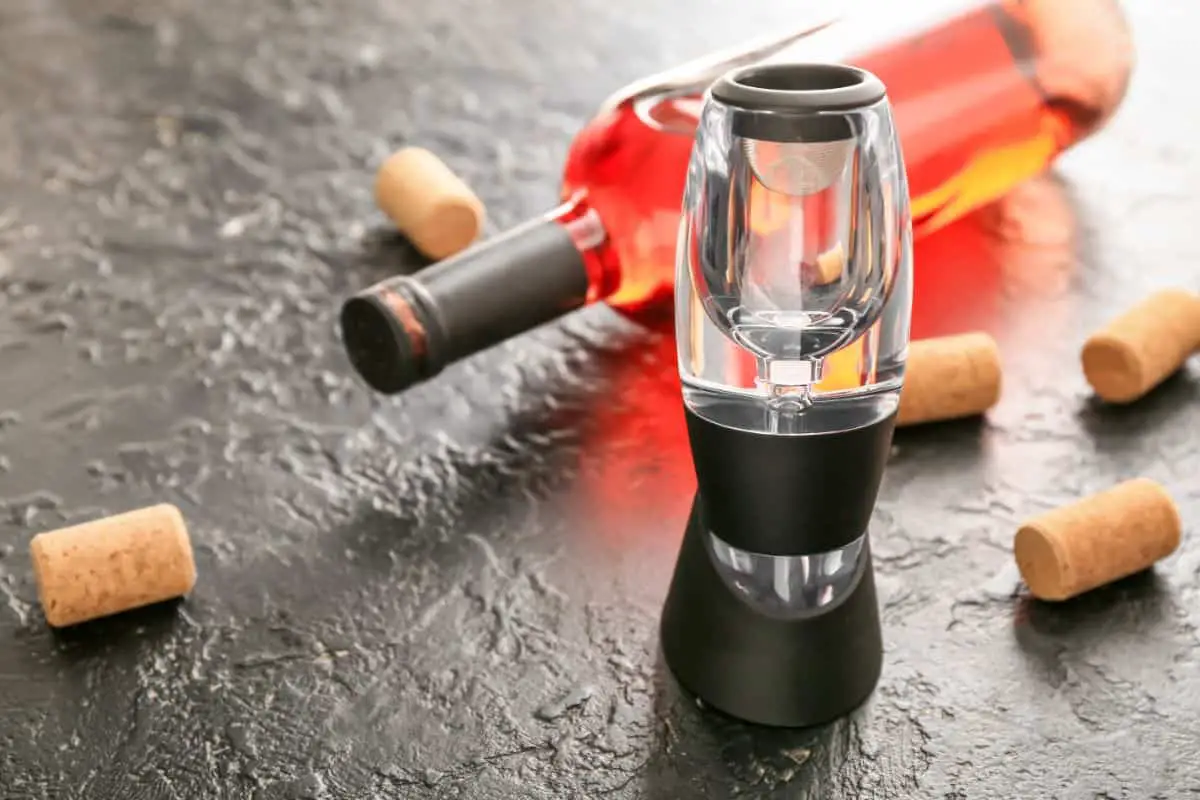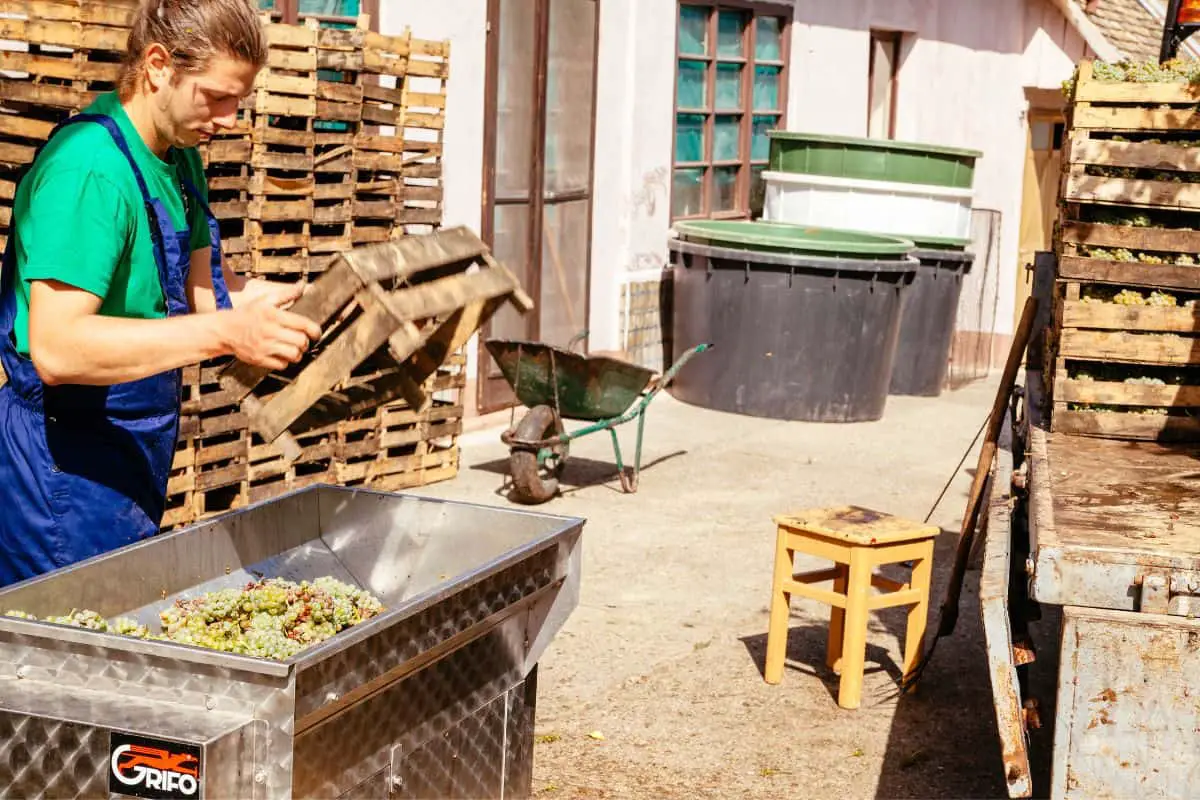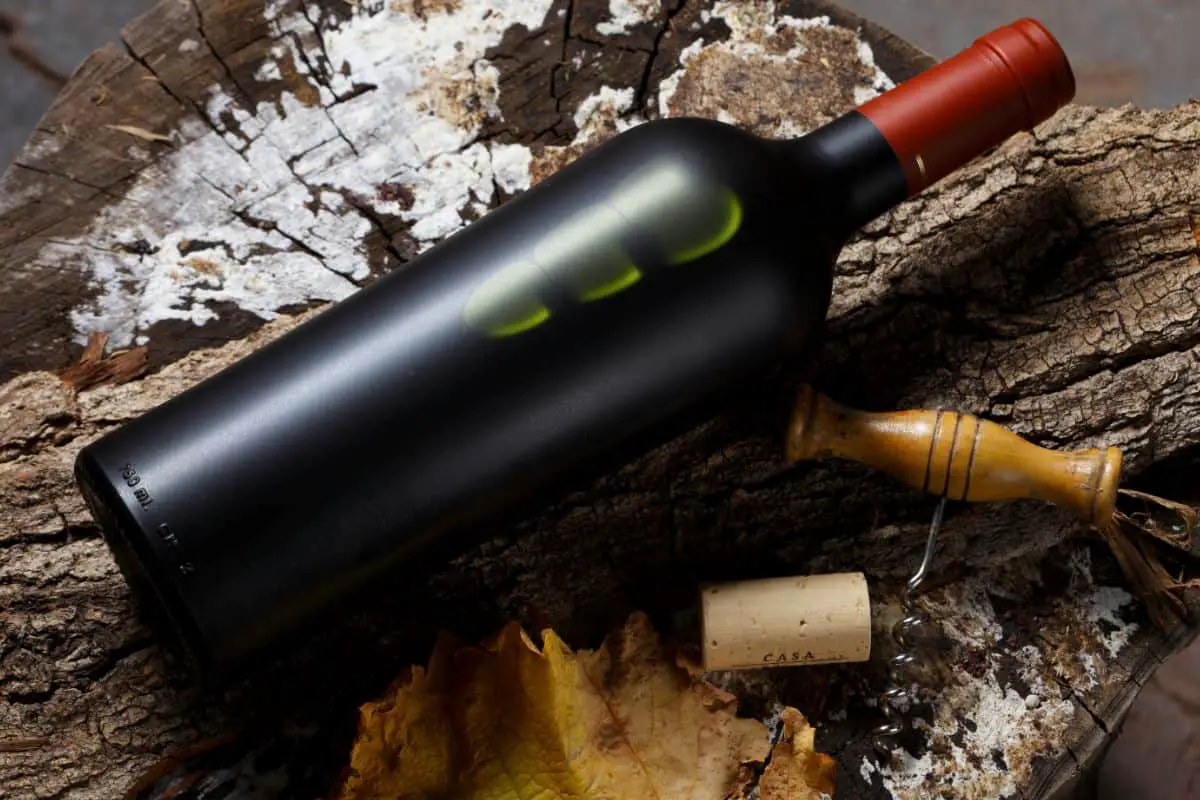Calling all wine connoisseurs out there, today we’re talking about aerating wine!
In actuality, you don’t have to be a wine connoisseur to enjoy the benefits of aerating wine, but what is it?
Have you ever opened a bottle of wine, read what different notes and flavors you should be tasting, but just don’t? Well you’re not alone.

Most of us out there struggle to recognize and identify the different sensory characteristics in wine, unless of course you’ve had wine tasting training.
Aerating wine brings the flavors of it to the forefront, making it much easier to identify the different tastes associated with the particular wine.
We’re going to be explaining what a wine aerator is, what it does and the benefits to aerating your wine.
What Is A Wine Aerator
You’ve probably seen a wine aerator at a fancy restaurant and not even known it.
They come in many different shapes and sizes, but you’ll most often see an aerator that is inserted directly into the wine through the wine’s bottle opening.
Other forms include a separate device all together that you pour your wine through and nowadays we have electric wine aerators that swirl the wine around before you pour it into your glass.
Wine aerating is quite simple actually, it’s essentially a device that exposes the wine to more oxygen than it would in the normal way of just opening a wine bottle and directly pouring from the bottle to a glass.
When wine is poured from a bottle into a glass, the compounds in the wine undergo oxidation and evaporation and both of these processes help to minimize any unwanted flavors in the wine.
This is why you’ll often see people leaving their wine to ‘breathe’, they’re letting oxidation and evaporation take place to make the wine taste better.
What Does A Wine Aerator Do?
Now, we touched upon what a wine aerator does in the above paragraph a little bit, but we’re going to explain it in more detail here.
So once the wine has been exposed to as much oxygen as possible, oxidation and evaporation will start to take place.
The ethanol in the wine is susceptible to oxidation and some of the ethanol is made into acetaldehyde and acetic acid which helps to get rid of the stronger, medicinal characteristics within the wine and replaces them with flavors and aromas considered to be more nutty or grassy.
Be careful not to over oxidize your wine, as it can turn the color slightly brown and it may have an unpleasant smell of pennies or vinegar.
This is also the same process an apple goes through when it starts to become brown after being left out for too long.
Evaporation is the other key process of wine aerating, it will evaporate the two of the main unstable compounds in wine, sulfites and ethanol.
The ethanol is present due to the wine’s alcohol content, but sulfites are added in the winemaking process to avoid overoxidation.
How To Use A Wine Aerator
Hopefully this is sounding good to you so far and you’re wanting to try aerating your wine to see if you can identify many of the secondary notes in the alcohol.
So how do you use it? There’s a few different ways that you can aerate your wine.
The first one is to swirl the liquid around in the glass a few times, this increases the surface area of the wine to speed up the evaporation and oxidation process.
Now you finally know why they swirl their wine around in the movies!
The next option is to get an aerator for wine, this speeds up the processes of evaporation and oxidation by using pressurized air.
This will all depend on the type of wine aerator you’ve got, so you should check in advance how to use it.
Next up is learning how to decant your wine, you’ve probably seen those big vase looking glass vials.
They’re used to increase the wine’s surface area to encourage the evaporation and oxidation process to speed up, and then the decanter is then used to pour the wine into individual glasses.
What Are The Benefits To Aerating Wine?

It Will Enhance The Flavors In Your Wine
This is probably the most obvious benefit to aerating your wine, it’s all well and good buying a fancy bottle with notes of wood smoke, vanilla, spices or nuts but if you can’t identify them, then what’s the point?
Aerating your wine will be able to show you what you’ve been missing out on, you’ll actually be able to accurately recognize the flavors and aromas in your wine since they won’t be masked by the presence of the uneasy sulfites and ethanol.
It Saves Money
If you’re someone that cares a lot about a wine’s quality, then buying a wine aerator will definitely benefit you in the long run.
If you buy a cheaper bottle of wine and aerate it, it’ll accentuate the flavors and aromas in the wine and shine more than an un-aerated expensive bottle of wine will.
It’s More Efficient Than Using A Decanter
Utilizing a wine aerator allows you to aerate the wine as you go, with a decanter you’ll usually have to pour the entire bottle into the decanter and finish it in one sitting.
Whereas with the aerator, you can have a glass or two and leave the bottle for the night and there’s no worries of it over oxidizing and turning brown with an unpleasant aroma.
Final Thoughts
Aerating your wine comes with a wide range of benefits, the most important is that it will bring out the notes in your wine that you couldn’t identify before aeration.
It’s a great way to get rid of the unwanted medicinal, eggy smells of the sulfides and ethanol and replaces them with the true aromas the wine holds.
Wine aerators are affordable and a great way to enhance your wine tasting experience.
- How to Learn Wine Tasting: Essentials for Beginners - March 10, 2024
- How to Learn to Like Wine: Cultivating an Appreciation for the Vintner’s Art - March 10, 2024
- Thanksgiving Sangria: A Flavorful Twist to Your Holiday Table - August 27, 2023








